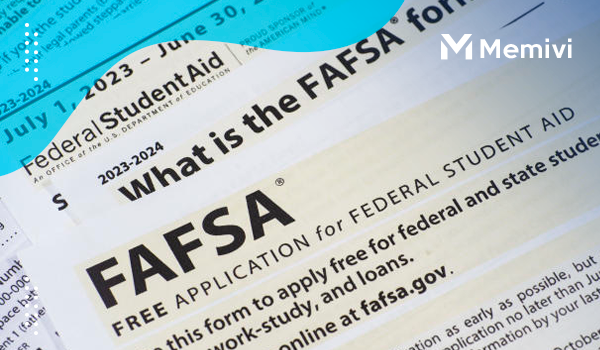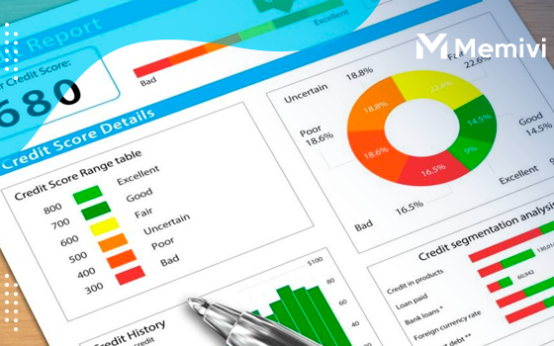
However, there is a program that is helping to ease the financial burden of higher education: The Free Application for Federal Student Aid (FAFSA). In the past, the FAFSA application process was complicated and confusing, causing many students and families to miss out on crucial financial aid opportunities. However, recent changes to the FAFSA process have made it easier than ever for students and families to apply for and receive financial aid.
As a result, the FAFSA fix is putting $1.8 billion back in the hands of college students and families, unlocking opportunities that might otherwise be out of reach. In this post, we’ll explore the FAFSA program, the recent changes that have been made, and how these changes are making college more affordable for everyone.
Understanding the FAFSA: What is it and why is it important?
The Free Application for Federal Student Aid (FAFSA) is a crucial form that college students and their families need to complete in order to unlock financial aid opportunities. It serves as a gateway to access federal grants, loans, and work-study programs, as well as state and institutional aid.
Understanding the FAFSA is essential for any student or family navigating the complex landscape of college financing. This form collects detailed information about a student’s or family’s financial situation, including income, assets, and household size. It provides a comprehensive snapshot of their financial need, which is then used by colleges and universities to determine the amount of aid they are eligible to receive.
The importance of the FAFSA cannot be overstated.
For many students and families, the cost of higher education can be a significant barrier. Without financial aid, pursuing a college degree may seem out of reach. The FAFSA is designed to bridge this gap and make education more accessible to all.
By completing the FAFSA, students can tap into various financial aid sources, such as Pell Grants, which do not need to be repaid, and federal student loans with favorable interest rates and flexible repayment options.
Additionally, state and institutional aid programs often require the submission of the FAFSA to determine eligibility. The FAFSA also plays a crucial role in unlocking need-based scholarships and potential merit-based awards.
Many colleges and universities rely on FAFSA data to assess a student’s financial need and allocate their own institutional aid accordingly. Therefore, even if a student or family believes they may not qualify for federal aid, completing the FAFSA is still vital to potentially access other forms of financial assistance.
The problems with the previous FAFSA system
The previous FAFSA system was plagued with numerous problems that hindered students and families from accessing the financial aid they deserved. One major issue was the complexity and length of the application itself.
The old FAFSA form consisted of more than 100 questions, requiring extensive information about income, assets, and personal details. This overwhelming process often deterred individuals, especially those from low-income backgrounds, from completing the application.
Additionally, the timing of the FAFSA submission posed another challenge. The application opened on October 1st each year, but required tax information from the previous year. This created a significant delay for families who had not yet filed their taxes or were awaiting necessary documents. As a result, many students missed out on early financial aid opportunities or were forced to estimate their income, leading to potential inaccuracies and subsequent adjustments later on.
Furthermore, the lack of integration between the FAFSA and other financial aid platforms added to the frustration and confusion. Students often had to manually input their financial information multiple times, increasing the likelihood of errors and delays in the application process. This disjointed system made it difficult for students and families to navigate the complex financial aid landscape and maximize their opportunities for assistance.
The FAFSA Fix: What changes were made and why?
The Free Application for Federal Student Aid (FAFSA) is a critical step in the college financial aid process for students and families. However, for years it has been plagued with challenges and complexity, discouraging many from completing it and potentially missing out on valuable financial assistance.
Recognizing this issue, the government took a significant step forward by implementing the FAFSA Fix, a series of changes aimed at simplifying and streamlining the application process.
One of the key changes introduced under the FAFSA Fix is the shift in the timeline for submitting the application.
Previously, students and families were required to wait until the beginning of the calendar year to file their FAFSA, often resulting in missed deadlines and limited access to aid.
However, with the FAFSA Fix, the application window now opens in October, allowing applicants to submit their forms earlier and increasing their chances of receiving aid. Moreover, the FAFSA Fix has also brought about significant changes in the data retrieval process. Previously, applicants had to manually input their financial information, which was time-consuming and prone to errors.
With the new changes, students and families can now directly link their FAFSA application to the IRS database, automatically populating their financial details. This streamlined approach not only saves time but also ensures accuracy, reducing the likelihood of processing delays or discrepancies.
Steps to take advantage of the FAFSA Fix: A guide for students and families

Navigating the financial aid process can be overwhelming for students and their families, but with the recent FAFSA Fix, taking advantage of available opportunities has become easier than ever. In this section, we will provide you with a step-by-step guide on how to make the most of the FAFSA Fix and secure the financial support you need for your college education.
- Stay informed: Stay up to date with the latest information regarding the FAFSA Fix. Keep an eye on official announcements, news articles, and college financial aid websites to ensure you have the most accurate and current information.
- Gather necessary documents: Before starting the FAFSA application, gather all the required documents, including your social security number, federal tax returns, W-2 forms, bank statements, and any other financial records. Having everything ready will make the application process smoother and faster.
- Create an FSA ID: Visit the Federal Student Aid website and create your FSA ID. This will serve as your electronic signature for the FAFSA application and allow you to access and manage your financial aid information online.
- Complete the FAFSA: Fill out the FAFSA form accurately and thoroughly. Double-check all the information before submitting to avoid any errors or delays in processing. The FAFSA Fix has simplified the process by allowing families to use prior-prior year tax information, making it easier to complete the application.
- Explore additional financial aid options: While the FAFSA is a crucial step, it is not the only avenue for financial support. Research other scholarships, grants, and work-study opportunities offered by your chosen college or external organizations. Maximize your chances of securing additional funding by applying to as many relevant opportunities as possible
- Follow up: After submitting your FAFSA, keep an eye on your email and physical mail for any communication from colleges or financial aid offices. Respond promptly to any requests for additional information or clarification to ensure a smooth processing of your application.
- Review your financial aid package: Once you receive your financial aid award letter, carefully review the details of the package. Compare the offers from different colleges, taking into consideration not only the amount of aid but also the terms and conditions. Consider reaching out to the financial aid office if you have any questions or concerns.
By following these steps, you can make the most of the FAFSA Fix and increase your chances of accessing the financial aid you need to pursue your college education. Remember, staying proactive, organized, and informed is key to unlocking opportunities and securing a brighter future through financial support.
Final Thoughts
We hope you found our blog post on the FAFSA Fix insightful and empowering. The FAFSA Fix is a game-changer for college students and their families, enabling them to access financial aid that was previously unavailable. By unlocking these opportunities, an incredible $1.8 billion is now back in the hands of those who need it most. We encourage you to share this information with anyone who could benefit from it, as education should be accessible to all. Together, let’s continue to support and advocate for equal opportunities in higher education.


 Best Allowance and Chore App for Kids <p class='sec-title' style='line-height: normal; font-weight: normal;font-size: 16px !important; text-align: left;margin-top: 8px;margin-bottom: 0px !important;'> As parents, we all know how challenging it can be to teach our children the value of money and how to manage it effectively. </p>
Best Allowance and Chore App for Kids <p class='sec-title' style='line-height: normal; font-weight: normal;font-size: 16px !important; text-align: left;margin-top: 8px;margin-bottom: 0px !important;'> As parents, we all know how challenging it can be to teach our children the value of money and how to manage it effectively. </p>  Victory for Consumers as All Three Credit Bureaus Now Offer Weekly Free Report Access <p class='sec-title' style='line-height: normal; font-weight: normal;font-size: 16px !important; text-align: left;margin-top: 8px;margin-bottom: 0px !important;'> In a victory for consumers everywhere, all three credit bureaus have announced that they will now offer free weekly credit reports. </p>
Victory for Consumers as All Three Credit Bureaus Now Offer Weekly Free Report Access <p class='sec-title' style='line-height: normal; font-weight: normal;font-size: 16px !important; text-align: left;margin-top: 8px;margin-bottom: 0px !important;'> In a victory for consumers everywhere, all three credit bureaus have announced that they will now offer free weekly credit reports. </p>  Revolutionizing Comfort: The Best HVAC Software of 2024 <p class='sec-title' style='line-height: normal; font-weight: normal;font-size: 16px !important; text-align: left;margin-top: 8px;margin-bottom: 0px !important;'> As technology advances, it's becoming increasingly more important to use software that can help streamline your business and keep you competitive. </p>
Revolutionizing Comfort: The Best HVAC Software of 2024 <p class='sec-title' style='line-height: normal; font-weight: normal;font-size: 16px !important; text-align: left;margin-top: 8px;margin-bottom: 0px !important;'> As technology advances, it's becoming increasingly more important to use software that can help streamline your business and keep you competitive. </p>